
How to Use 5V 30A 1- Channel Relay Module With Optocoupler High/Low Level Trigger: Examples, Pinouts, and Specs
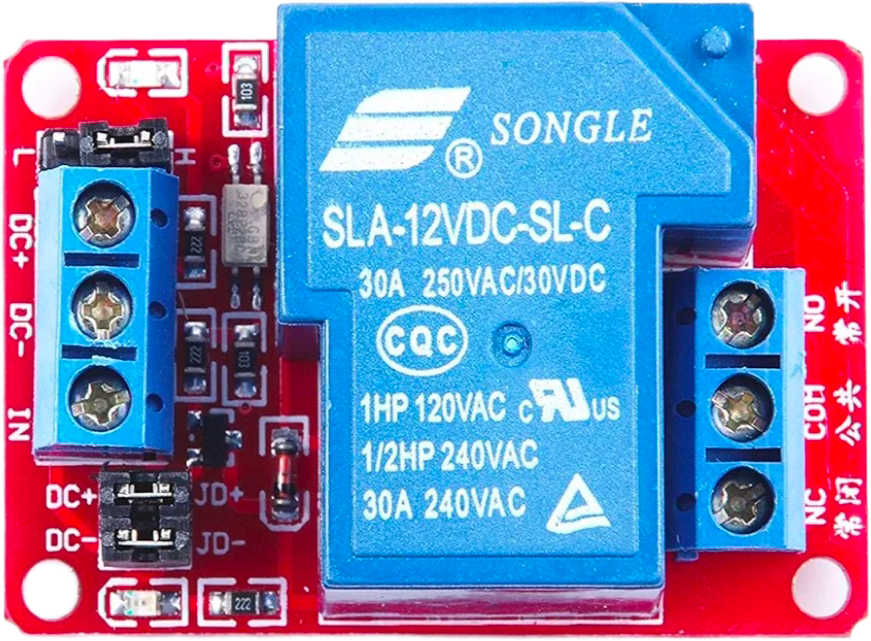
 Design with 5V 30A 1- Channel Relay Module With Optocoupler High/Low Level Trigger in Cirkit Designer
Design with 5V 30A 1- Channel Relay Module With Optocoupler High/Low Level Trigger in Cirkit DesignerIntroduction
The 5V 30A 1-Channel Relay Module manufactured by SONGLE (Part ID: RELAY MODULE) is a versatile electronic component designed to control high-voltage devices using low-voltage signals. It features an optocoupler for electrical isolation, ensuring safe operation and protection of sensitive control circuits. This module supports both high-level and low-level triggering, making it adaptable to a wide range of applications.
Explore Projects Built with 5V 30A 1- Channel Relay Module With Optocoupler High/Low Level Trigger
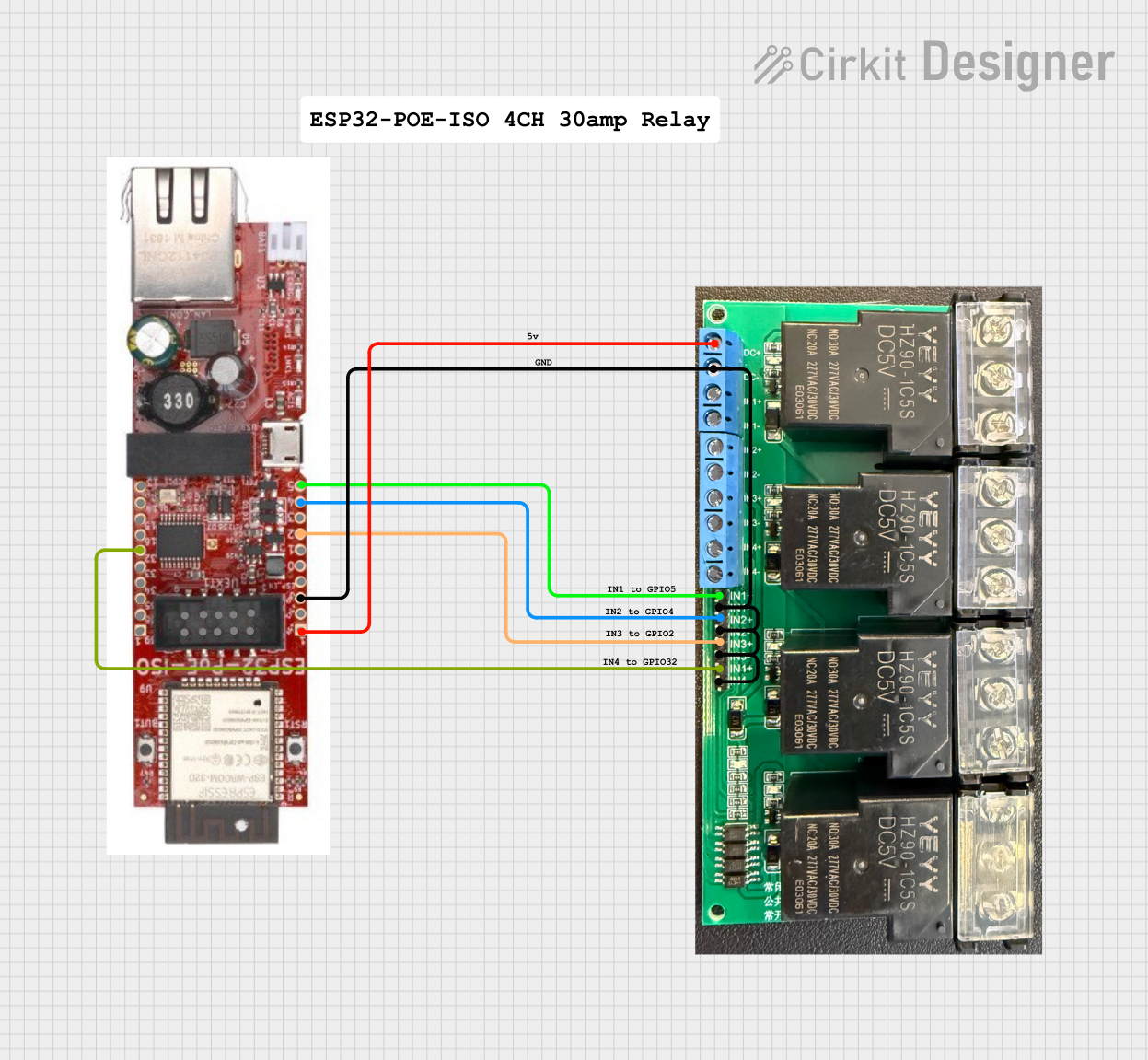
 Open Project in Cirkit Designer
Open Project in Cirkit Designer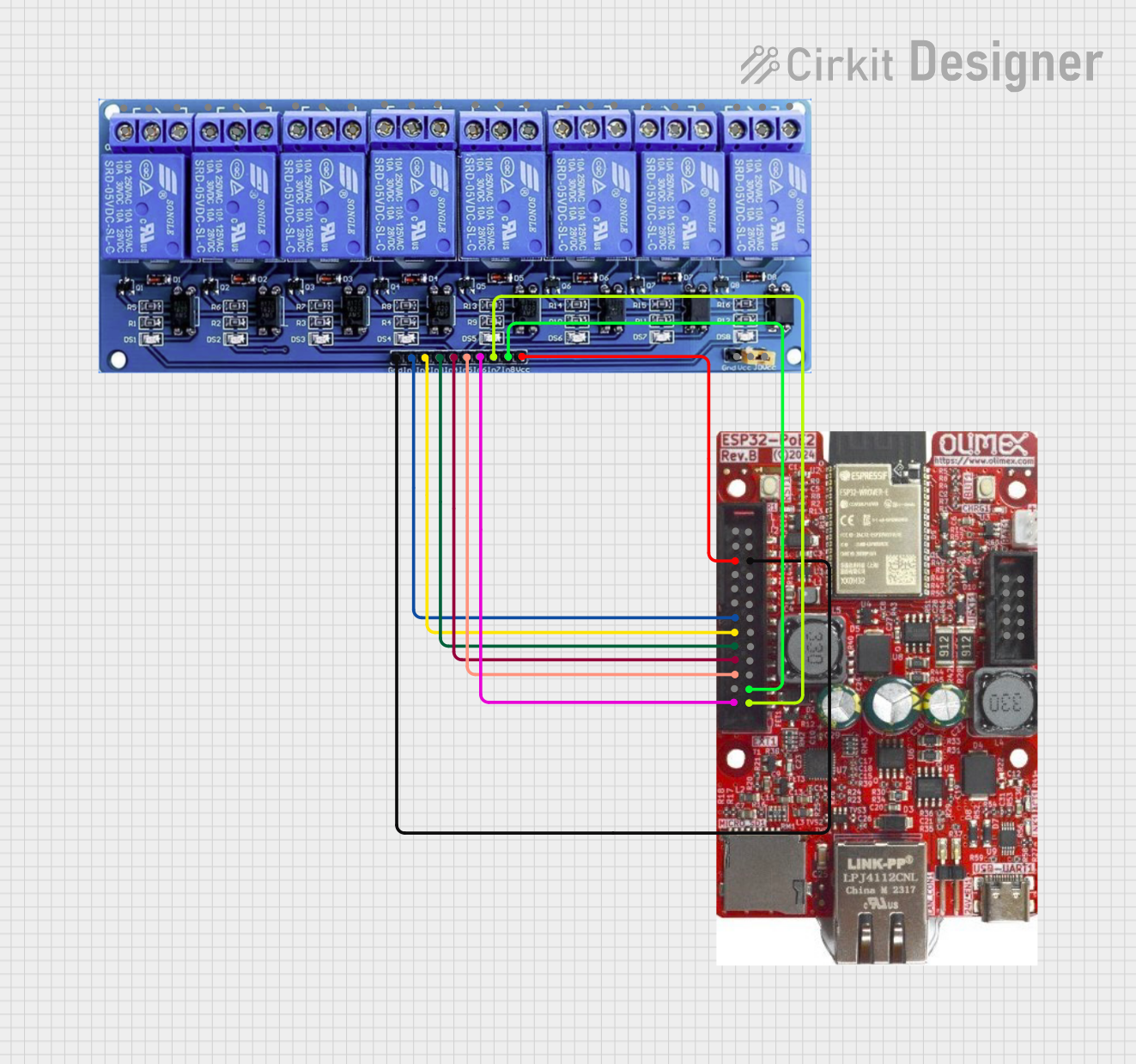
 Open Project in Cirkit Designer
Open Project in Cirkit Designer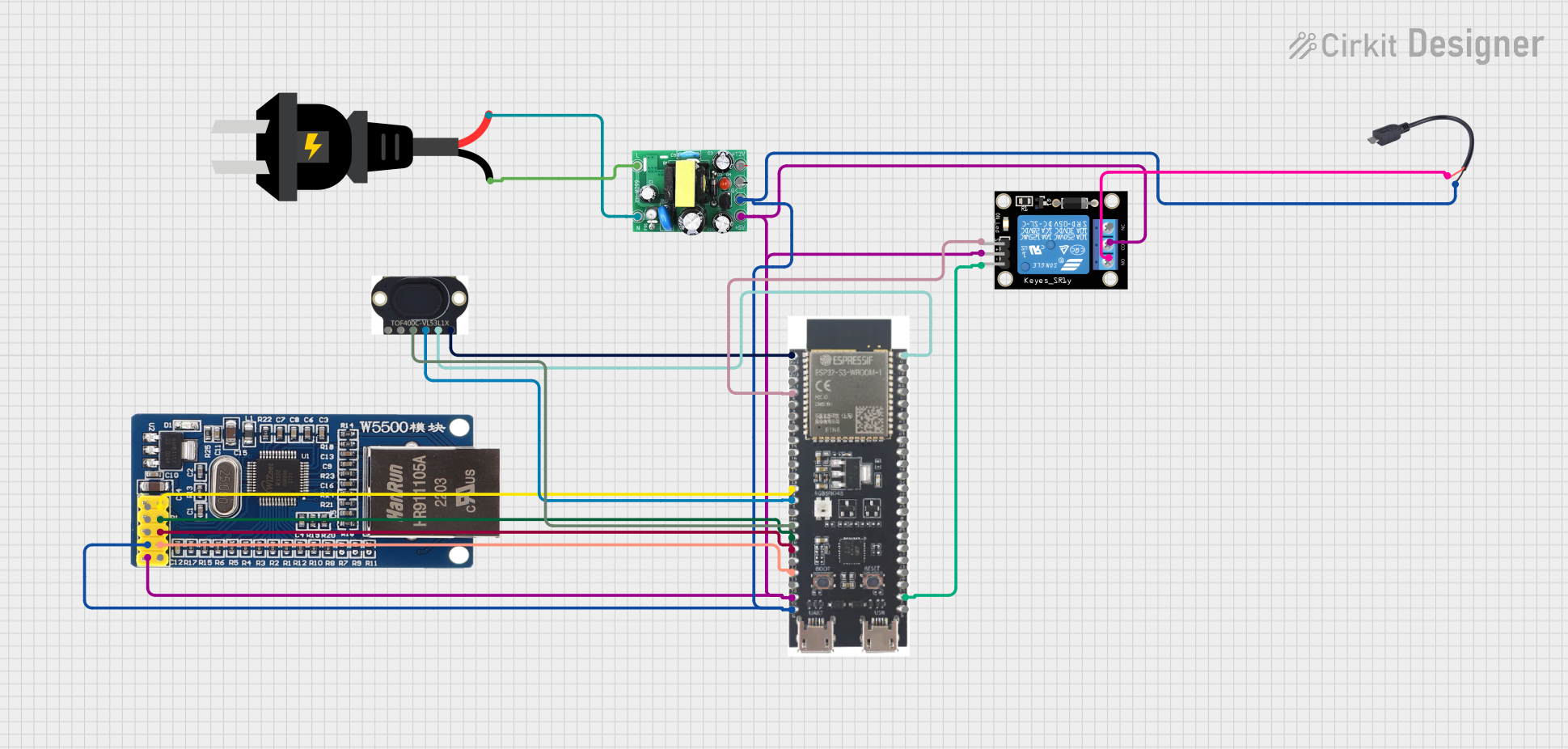
 Open Project in Cirkit Designer
Open Project in Cirkit Designer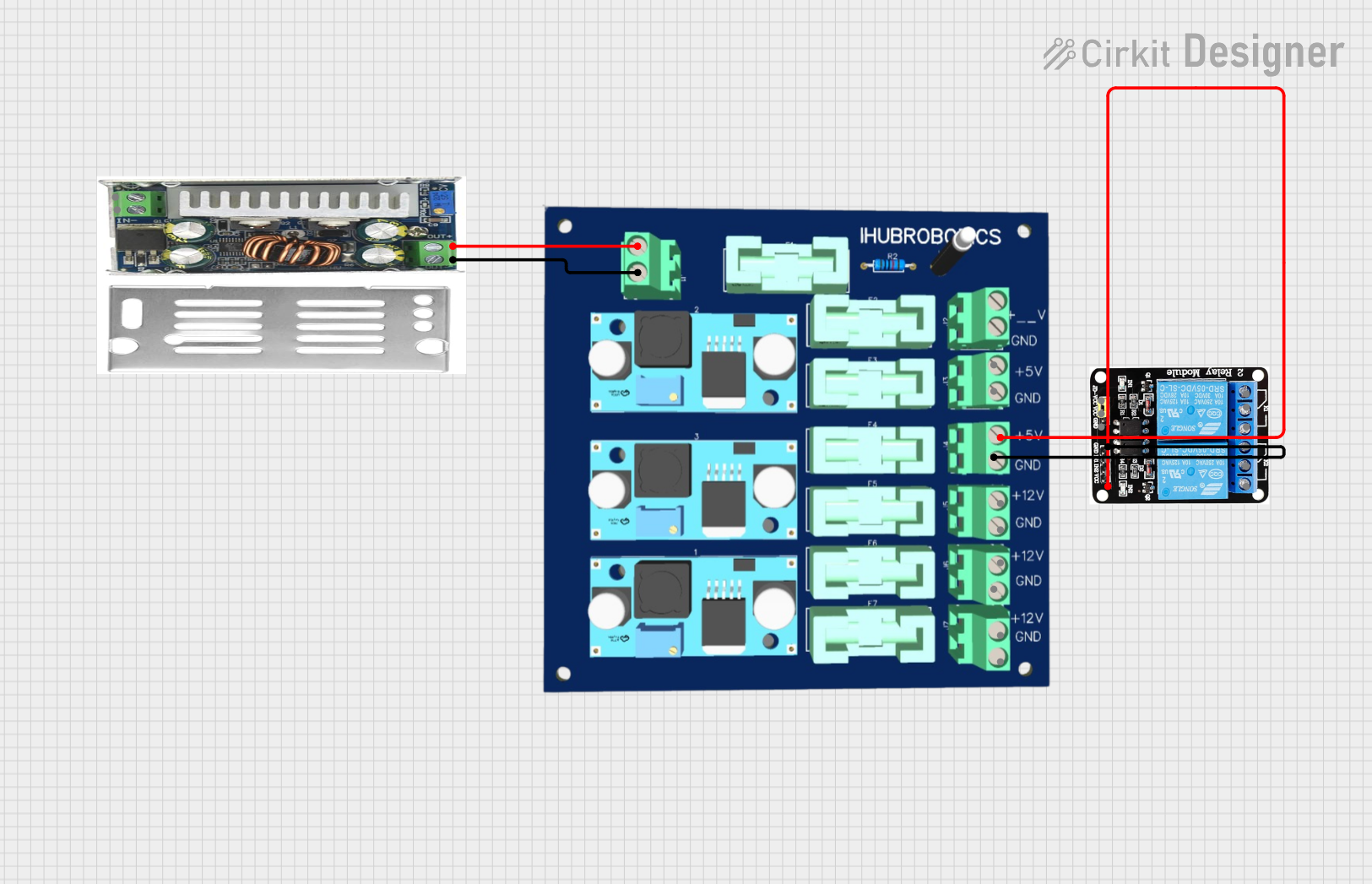
 Open Project in Cirkit Designer
Open Project in Cirkit DesignerExplore Projects Built with 5V 30A 1- Channel Relay Module With Optocoupler High/Low Level Trigger

 Open Project in Cirkit Designer
Open Project in Cirkit Designer
 Open Project in Cirkit Designer
Open Project in Cirkit Designer
 Open Project in Cirkit Designer
Open Project in Cirkit Designer
 Open Project in Cirkit Designer
Open Project in Cirkit DesignerCommon Applications and Use Cases
- Home automation systems (e.g., controlling lights, fans, or appliances)
- Industrial automation and control
- IoT projects requiring high-voltage device control
- Robotics and motor control
- Smart home projects with microcontrollers like Arduino, Raspberry Pi, or ESP32
Technical Specifications
The following table outlines the key technical details of the relay module:
| Parameter | Specification |
|---|---|
| Operating Voltage | 5V DC |
| Trigger Voltage | High-level: 3.0V–5.0V, Low-level: 0V |
| Maximum Load Voltage | 250V AC / 30V DC |
| Maximum Load Current | 30A |
| Trigger Modes | High-level or Low-level |
| Isolation Method | Optocoupler |
| Dimensions | 50mm x 26mm x 18.5mm |
| Weight | ~25g |
Pin Configuration and Descriptions
The relay module has the following pins and terminals:
Input Pins
| Pin Name | Description |
|---|---|
| VCC | Connect to the 5V power supply. |
| GND | Connect to the ground of the power supply. |
| IN | Signal input pin. Accepts high-level (3.0V–5.0V) or low-level (0V) triggers. |
| JD-VCC | Optional jumper pin for relay power. Used when isolating the relay power supply. |
Output Terminals
| Terminal Name | Description |
|---|---|
| COM | Common terminal. Connect to the load's power source or ground. |
| NO (Normally Open) | Normally open terminal. Connect to the load. Closed when the relay is active. |
| NC (Normally Closed) | Normally closed terminal. Connect to the load. Open when the relay is active. |
Usage Instructions
How to Use the Relay Module in a Circuit
- Power the Module: Connect the VCC pin to a 5V DC power supply and the GND pin to ground.
- Connect the Load:
- For devices that should turn ON when the relay is active, connect the load between the COM and NO terminals.
- For devices that should turn OFF when the relay is active, connect the load between the COM and NC terminals.
- Control Signal:
- Connect the IN pin to the control signal from a microcontroller or other control circuit.
- Ensure the control signal matches the trigger mode (high-level or low-level) configured on the module.
- Optional Isolation:
- If electrical isolation is required, remove the jumper between VCC and JD-VCC.
- Provide a separate 5V power supply to JD-VCC for the relay coil.
Important Considerations and Best Practices
- Electrical Isolation: Use the optocoupler feature to protect sensitive control circuits from high-voltage spikes.
- Load Ratings: Ensure the connected load does not exceed the module's maximum ratings (250V AC / 30V DC, 30A).
- Trigger Mode: Verify the trigger mode (high or low) before connecting the control signal.
- Flyback Diode: For inductive loads (e.g., motors), use a flyback diode across the load to prevent voltage spikes.
- Secure Connections: Ensure all connections are tight and insulated to prevent short circuits.
Example: Using the Relay Module with Arduino UNO
Below is an example of how to control the relay module using an Arduino UNO:
// Example: Controlling a 5V Relay Module with Arduino UNO
// This code toggles the relay ON and OFF every 2 seconds.
#define RELAY_PIN 7 // Define the pin connected to the relay module's IN pin
void setup() {
pinMode(RELAY_PIN, OUTPUT); // Set the relay pin as an output
digitalWrite(RELAY_PIN, LOW); // Start with the relay OFF (LOW level trigger)
}
void loop() {
digitalWrite(RELAY_PIN, HIGH); // Turn the relay ON
delay(2000); // Wait for 2 seconds
digitalWrite(RELAY_PIN, LOW); // Turn the relay OFF
delay(2000); // Wait for 2 seconds
}
Note: Adjust the RELAY_PIN definition to match the Arduino pin connected to the relay module.
Troubleshooting and FAQs
Common Issues and Solutions
Relay Not Activating:
- Cause: Insufficient power supply or incorrect wiring.
- Solution: Ensure the VCC pin is connected to a stable 5V power source and the GND pin is properly grounded.
Load Not Responding:
- Cause: Incorrect wiring of the load to the relay terminals.
- Solution: Verify the load is connected to the correct terminals (COM, NO, or NC) based on the desired behavior.
Microcontroller Not Triggering the Relay:
- Cause: Mismatch between the control signal and the trigger mode.
- Solution: Check the trigger mode (high-level or low-level) and ensure the control signal matches.
Relay Clicking but No Output:
- Cause: Faulty relay or damaged module.
- Solution: Test the relay with a multimeter or replace the module if necessary.
FAQs
Q1: Can I use this relay module with a 3.3V microcontroller like ESP32?
A1: Yes, the module supports high-level triggers as low as 3.0V, making it compatible with 3.3V logic.
Q2: Is it safe to control AC appliances with this module?
A2: Yes, but ensure proper insulation and follow safety guidelines when working with high-voltage AC loads.
Q3: Can I use this module to control multiple devices?
A3: No, this is a single-channel relay module. For multiple devices, use a multi-channel relay module.
Q4: What is the purpose of the optocoupler?
A4: The optocoupler provides electrical isolation between the control circuit and the high-voltage load, protecting sensitive components.
Q5: How do I change the trigger mode?
A5: The module typically includes a jumper or solder pads to configure the trigger mode. Refer to the module's datasheet for specific instructions.